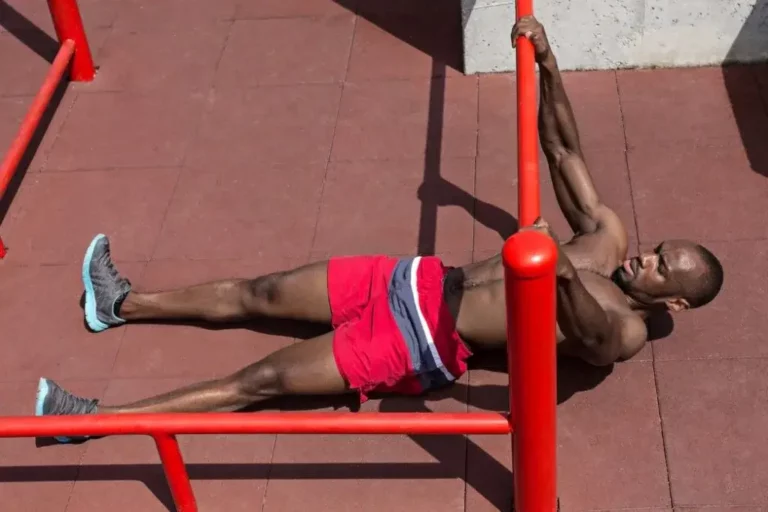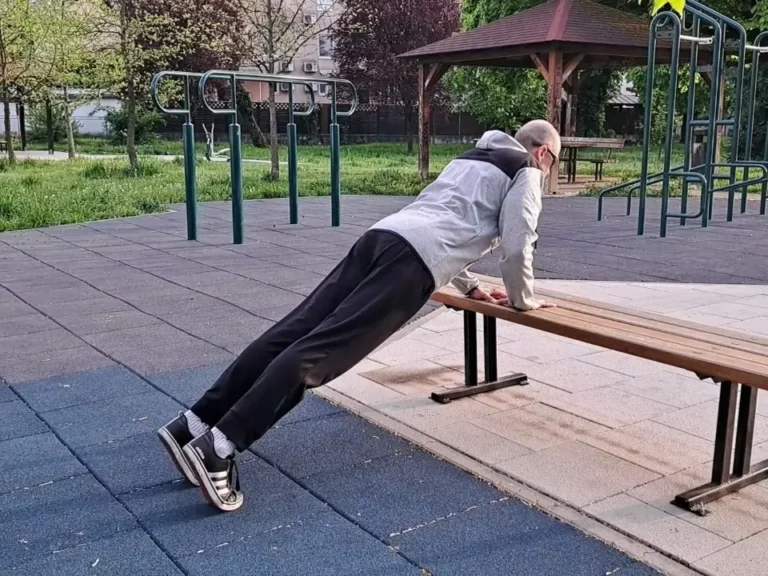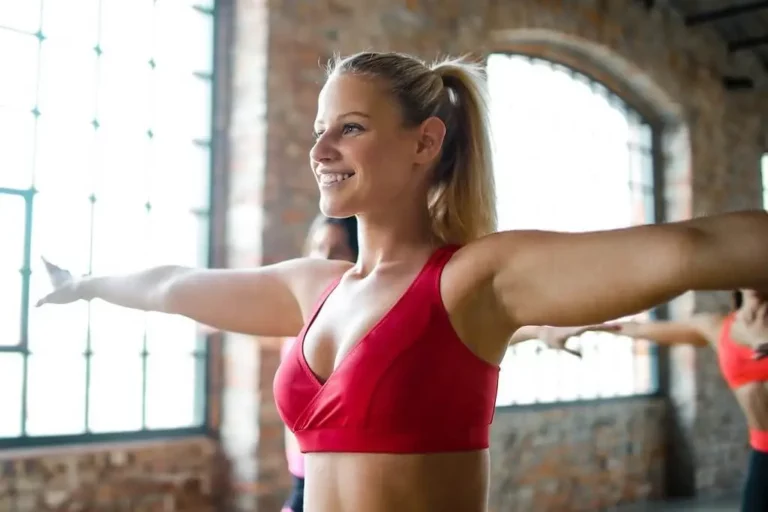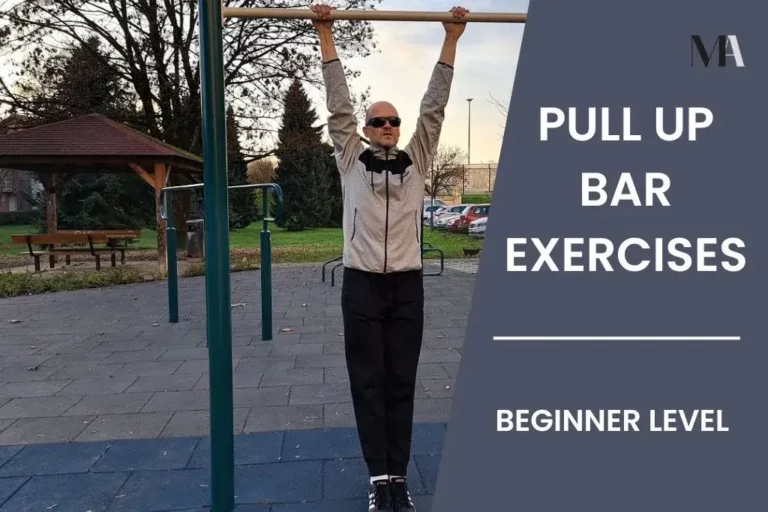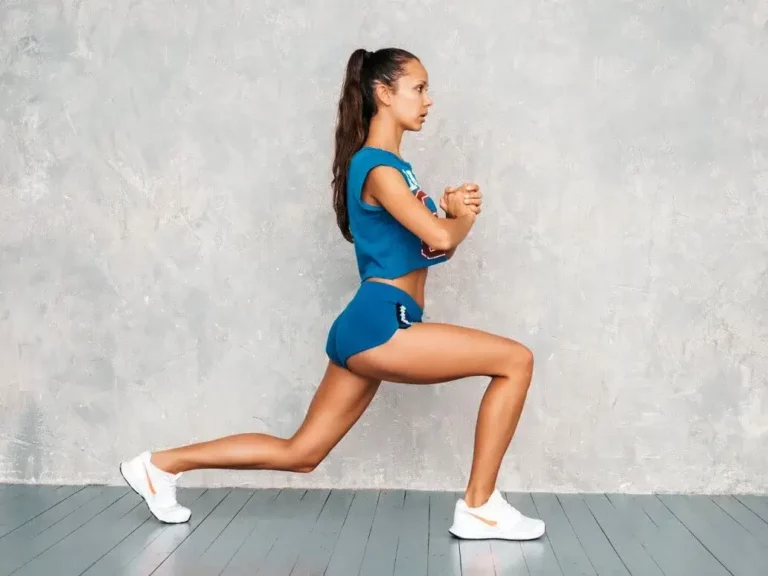Lower Chest Workout – To Turn Heads On The Beach
So, you want those envious looks at the beach? Nothing works better than a bulked-up chest in a well-developed man’s body. A lower chest workout will help you get those head turns when you walk down the beach this summer.
To build the maximal size of your chest muscles, you would want to work your upper, middle, and lower chest muscles.
Lower chest workout exercises can be used to form a stand-alone training if your lower chest muscles are lagging in development. Alternatively, those exercises can be used as a part of push-pull legs or an upper-lower split.
Here, you will learn some of the most versatile lower chest exercises you can do without access to a gym. So let’s go and get those pecs burning!
Lower Chest Workout: Muscles Involved
To be able to understand which part of the chest muscles are working with each exercise, it’s beneficial to know the anatomy of the chest muscles.
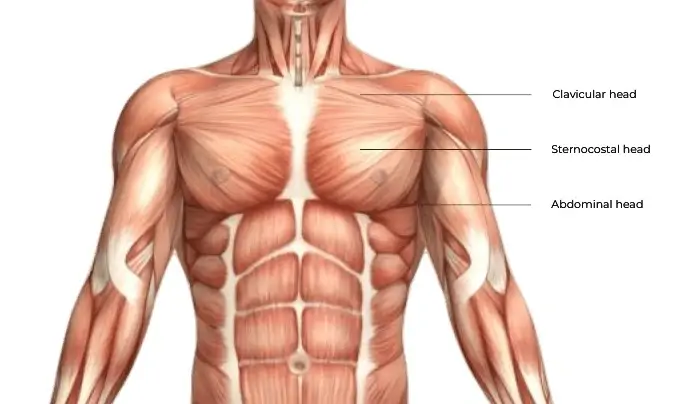
Chest muscle or Pectoralis Major consists of three parts:
- Clavicular head (upper chest)
- Sternocostal head (lower and mid-chest)
- Abdominal head (lower chest)
The clavicular head of a chest muscle (upper chest) attaches to a clavicle (collar) bone on one side and a humerus (upper arm) bone on the other.
The sternocostal head of a chest muscle (lower and mid-chest) attaches to the sternum (breast) bone and ribs on one side and the humerus (upper arm) bone on the other.
The abdominal head of a chest muscle (lower chest) attaches to the anterior layer of the rectus sheath on one side and the humerus (upper arm) bone on the other.
So, when we are talking about working the lower chest this means working the lower part of the sternocostal head and abdominal head of your pectoralis major muscle. Now, after a short anatomy lesson, we can dive deeper into exercises for your lower chest.
Lower chest workout: Exercises
Now that you know which part of the pec major you should target it’s easy to identify the right exercises. Generally speaking, you would like to perform some kind of pushing motion with your arms. This can be exercises like bench pressing, dips, or some variation of push-ups.
If your arms form an angle above 90 degrees to your body you are working the upper portion of your chest muscles. When your arms are exactly 90 degrees to your body, you are working the midsection of your chest muscles. If your arms form an angle below 90 degrees you are working your lower chest.
So, if you want to do a proper lower chest workout you would want to work your lower muscles. Because of this, perform exercises with your arms forming 0 – 90 degrees to your body. This means, your arms are down, parallel to your body – like in dips, or your arms up to 90 degrees – like in incline push up.
Archer push-ups
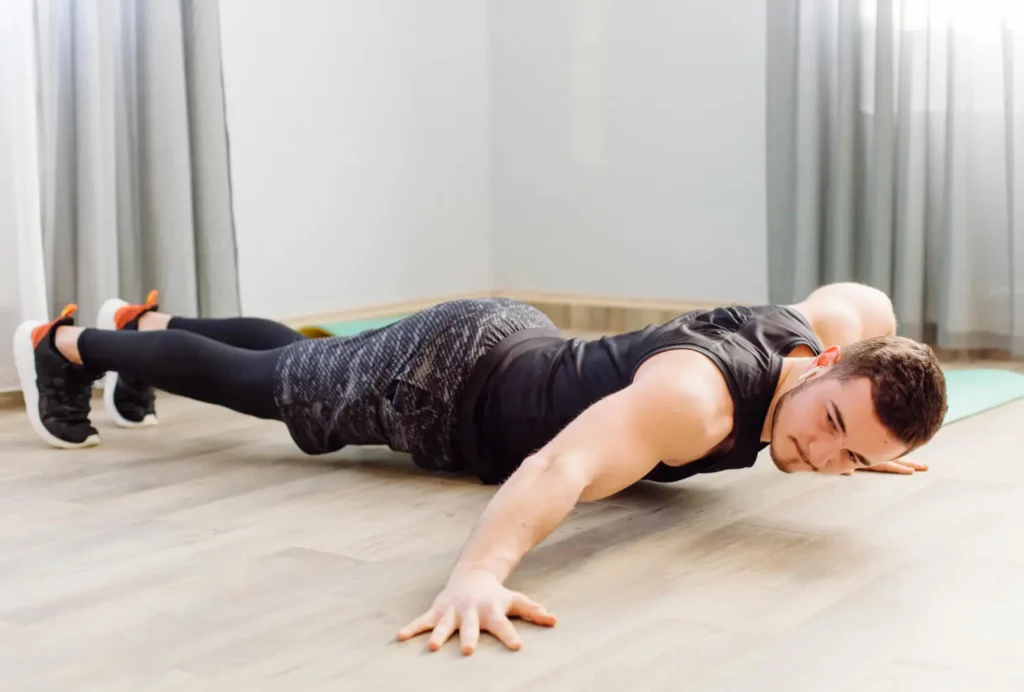
Archer push-ups are a more difficult variant of a normal push-up. This exercise can be a great addition to your lower chest workout.
But be careful when performing archer push-ups. Some people have dislocated their shoulders by performing this exercise. So proceed with caution.
Since this is more unilateral exercise it will load your muscles differently (more) than regular push-ups. Your triceps will work more on your bent arm. Your front delt and bicep will work more on your straight arm. Here is the potential danger of dislocating your straight arm shoulder.
Archer push-ups muscles worked:
Primary
- Lower and mid-chest
- Front delts
- Triceps
Secondary
- Abs
- Lower back
- Lats
- Biceps
Equipment
- None
How to perform archer push-ups
Position your hands on the ground much wider than your shoulder width. One of your arms will have to bend while you are moving down. This arm should be at around shoulder width.
Your other arm will have to go straight to your side. You should position your arm’s width to accommodate this requirement.
Your legs are on the floor touching the ground on your feet balls and your toes. Keep your entire body in a straight line by contracting your abs throughout the entire exercise.
Lower yourself down by flexing one of your arms in your elbows. Target to touch the floor with your chest. Your other arm will go straight to your side. Rotate this arm’s palm straight away from you while lowering down.
When you touch the floor with your chest (or get to the floor as close as possible) this is the lowest point of downward movement.
To initiate upward movement push yourself up from the floor by straightening your flexed arm in your elbow. You will also start rotating the palm of your other arm while slowly getting your body up. This arm should face forward when you are in the upper position.
Keep on pushing until your arms are straight. This is the highest point of upward movement.
Dynamic push-ups
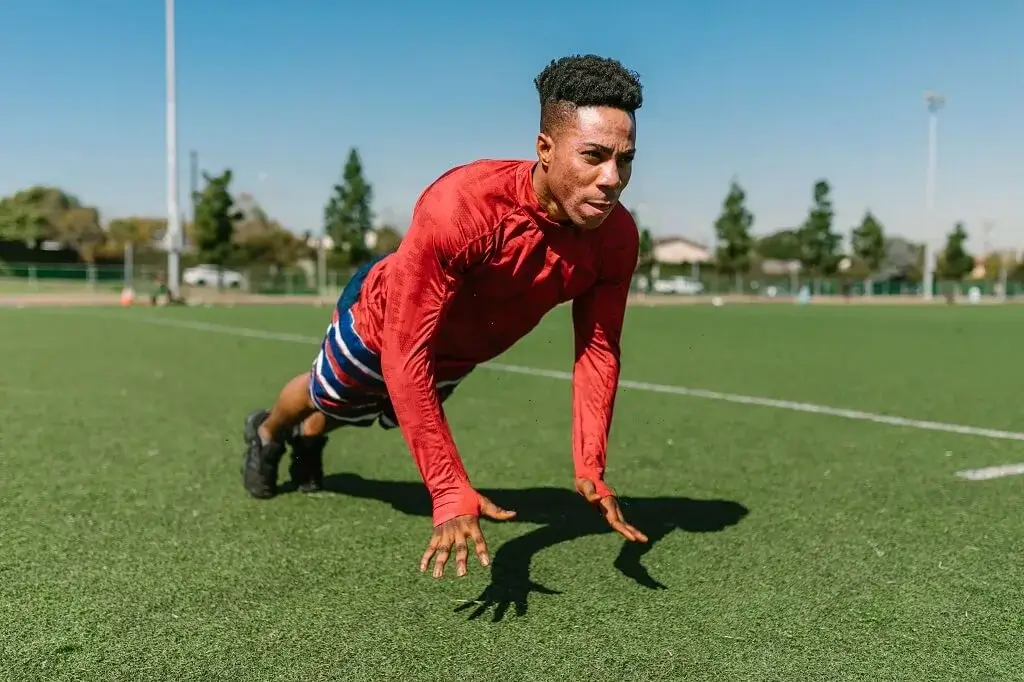
Another excellent push-up variant that helps you target your lower pecs and explode your muscle growth. When you go beyond push-ups and start playing with dynamic push-ups, some exercise variants can be really fun to do.
There are several different variations of dynamic push-ups that can get as fun as you like them to be. The most simple one is just pushing yourself up so hard in a push-up that your hands leave the ground up in the air in every rep.
After that, you can try clapping push-ups. And then the real fun begins with different clapping variants (behind your back, straight ahead…) and other variations. The more strength and explosiveness you have the more options and combinations you can explore.
Dynamic push-ups muscles worked:
Primary
- Lower and mid-chest
- Front delts
- Triceps
Secondary
- Abs
- Lower back
- Lats
Equipment
- None
How to perform dynamic push-ups
Here is the explanation of the simplest variation of the dynamic push-up, otherwise called plyo push-up. You can explore other variations on your own. It’s not all about sets and reps. Have fun with it.
Position your hands on the ground a little bit wider than your shoulder width. Your legs are on the floor touching the ground on your feet balls and your toes. Keep your entire body in a straight line by contracting your abs throughout the entire exercise.
Lower yourself down by flexing your arms at your elbows. Target to touch the floor with your chest.
When you touch the floor with your chest (or get to the floor as close as possible) this is the lowest point of downward movement.
To initiate upward movement push yourself explosively up from the floor by straightening your arms in your elbows. Your aim is to push yourself so hard from the floor that your arms are lifted from the floor when you are at the highest point of the movement.
Dips

If you have access to dip bars, dips are another great exercise to include in your lower chest workout. But you have to know how to do it to target your chest.
Depending on how you perform this exercise, it will predominantly work your triceps and front delts or your chest. So, your positioning and execution are really important if you want to target your lower chest.
Dips muscles worked:
Primary
- Lower and mid-chest
- Front delts
- Triceps
Secondary
- Abs
- Lats
Equipment
How to perform dips
Grab dip bars with both hands. Pull your shoulders back, so your chest is in front of your shoulders. Lean forward as much as you can.
Don’t allow your shoulders to come up to your ears in the uppermost position. Keep your shoulders depressed down the whole time.
This positioning of your body is crucial if you want to work your chest instead of your triceps and front delts. Concentrate on this before you start the movement and correct it if necessary during the exercise.
To initiate downward movement lower your body straight down by bending your elbows and leaning a little forward with your upper body.
Keep on lowering down until the upper portion of your arms is parallel to the ground. If you are still not strong enough to reach this lowest position, do it to the angle you can handle. Keep on progressing and building your strength until you can reach this lowest position. This is the lowest position of downward movement.
To push yourself up, push hard against the dip bars and start straightening your elbows. Try to concentrate on pushing the dip bar handles inwards instead of downward. This will help you load your chest muscles even more.
Remember to keep leaning forward and do not allow your shoulders to come up to your ears (especially at the highest point of the movement). Straighten your elbows to reach the highest point of the movement.
Don’t forget to keep leaning forward on the highest point of the movement. You don’t want to straighten your whole body at any point during this exercise.
Push-ups
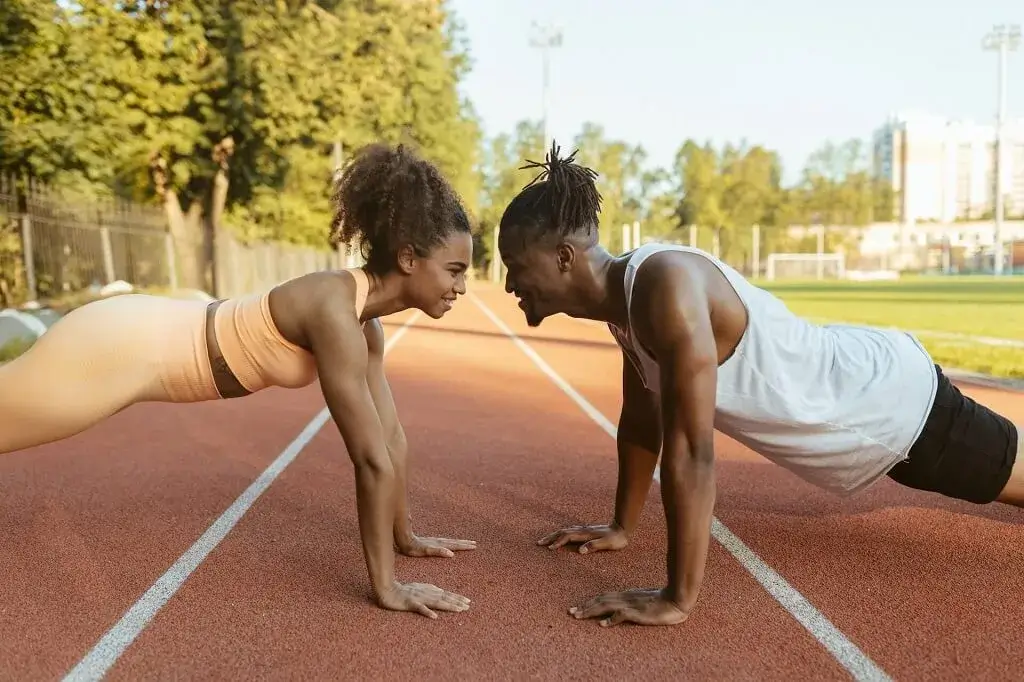
Regular push-ups are another exercise to include in your lower chest workout. By performing “normal” push-ups on the floor you will also be working your pecs. It’s because the angle of your arms to your body is less than 90 degrees. This exercise will be a little harder than incline push-ups.
Push-ups muscles worked:
Primary
- Lower and mid-chest
- Front delts
- Triceps
Secondary
- Abs
- Lower back
- Lats
Equipment
- None
How to perform push-ups
Position your hands on the ground a little bit wider than your shoulder width. Your legs are on the floor touching the ground on your feet balls and your toes. Keep your entire body in a straight line by contracting your abs throughout the entire exercise.
Lower yourself down by flexing your arms at your elbows. Target to touch the floor with your chest.
When you touch the floor with your chest (or get to the floor as close as possible) this is the lowest point of downward movement.
To initiate upward movement push yourself up from the floor by straightening your arms in your elbows. Keep on pushing until your arms are straight. This is the highest point of upward movement.
Incline push-ups
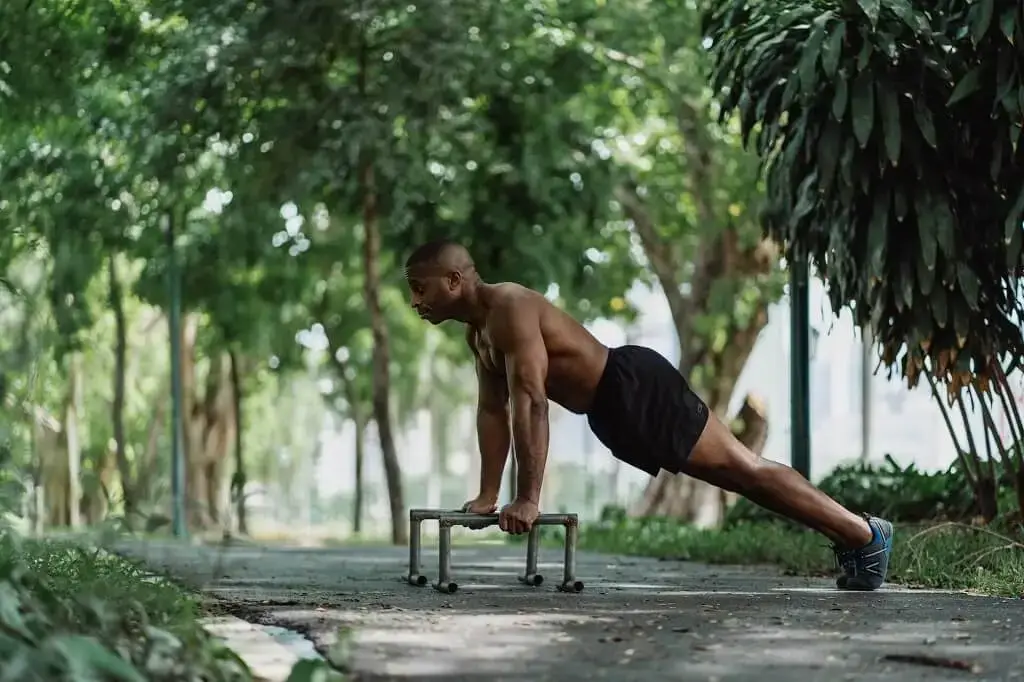
Incline push-ups might or may not be too easy for you. It will depend on the level of your current physical ability. If this exercise is too easy for you (you can perform more than 20 reps in a set), you can look for more difficult exercises from a push-up progression or one-arm push-up progression for added challenge.
When performing incline pushups, you will feel predominantly your lower chest, front delts, and your triceps muscles working.
Incline push-up muscles worked:
Primary
- Lower and mid-chest
- Front delts
- Triceps
Secondary
- Abs
- Lower back
- Lats
Equipment
- Bench (or any other elevated surface)
How to perform incline push-ups
You can perform incline pushups on any elevated surface you have access to. This may be a bench, box, bed, or chair.
Position your hands on the elevated surface a little bit wider than your shoulder width. Your legs are on the floor touching the ground on your feet balls and your toes. Keep your entire body in a straight line by contracting your abs throughout the entire exercise.
Lower yourself down by flexing your arms at your elbows. Target to touch the elevated surface with your chest.
When you touch the surface with your chest (or get to the surface as close as possible) this is the lowest point of downward movement.
To initiate upward movement push yourself up from an elevated surface by straightening your arms in your elbows. Keep on pushing until your arms are straight. This is the highest point of upward movement.
Putting It All Together: How To Do A Lower Chest Workout?
You can think of each individual exercise as a building block of a workout. When you put all exercises one after the other and add sets, reps, and rests, you have a complete workout ready to go. Don’t forget about the warm-up and cool down too.
Here is what this workout looks like when we put it all together:
- Start with a short 5 – 10 min warmup
- Archer push-ups 3 sets of 5-8 reps (rest for 1.5 – 3 minutes between sets)
- Rest for 2 – 3 minutes
- Dynamic push-ups 3 sets of 5-8 reps (rest for 1.5 – 3 minutes between sets)
- Rest for 2 – 3 minutes
- Dips 3 sets of 5-8 reps (rest for 1.5 – 3 minutes between sets)
- Rest for 2 – 3 minutes
- Push-ups 3 sets of 8-12 reps (rest for 1.5 – 3 minutes between sets)
- Rest for 2 – 3 minutes
- Incline push-ups 3 sets of 10-15 reps (rest for 1.5 – 3 minutes between sets)
- Archer push-ups 3 sets of 5-8 reps (rest for 1.5 – 3 minutes between sets)
- Finish with a 5 – 15 min cool down stretching routine

